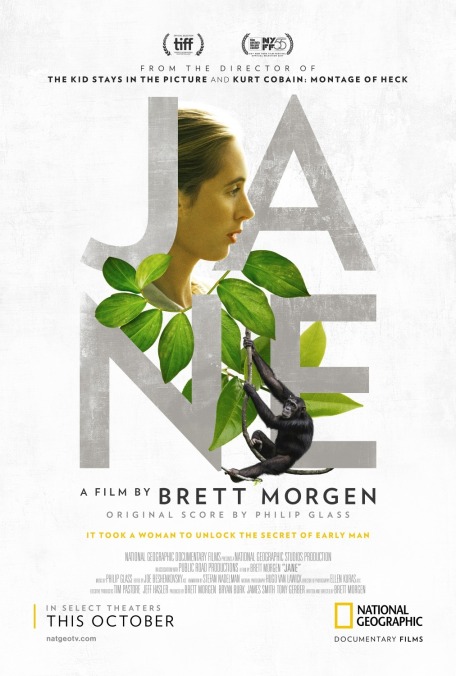Who needs a Jane Goodall biopic when you have the remarkable, uncovered footage of Jane?

How is it possible that Hollywood hasn’t yet made a movie about Jane Goodall? Her story isn’t just extraordinary, but extraordinary in a way that’s tailor-made for the big screen: A young British woman with no scientific training of any kind volunteers to conduct the first study of chimpanzees in the wild, initially accompanied to Gombe (in Tanzania) only by her mother. It’s not as if there’s no precedent, either—Sigourney Weaver was Oscar-nominated for playing Goodall’s fellow “Trimate” Dian Fossey in Gorillas In The Mist (1988). (Admittedly, Fossey’s then-recent murder gave that film an additional dramatic hook, whereas Goodall is still with us at age 83.) Instead, there have been numerous documentaries, of which Brett Morgen’s Jane, made for National Geographic, is only the latest. However, Jane boasts one thing that its predecessors did not: a treasure trove of truly stunning 16mm footage shot in the early 1960s by famed nature photographer Hugo Van Lawick (who would become Goodall’s first husband).
Misplaced for decades, these reels, constituting some 160 hours, were rediscovered in the National Geographic archives three years ago, just sitting in a hallway. (Some alternate takes had been used in a 1965 TV special, Miss Goodall And The Wild Chimpanzees, narrated by Orson Welles. None of the footage in Jane has previously been seen.) Morgen has assembled what was clearly a jumble of random shots into something that plays—for a while, anyway—remarkably like what you’d expect from a scripted Goodall biopic, except that it “stars” the actual Jane Goodall. Ostensibly, Van Lawick was in Gombe to document her work with the chimps, and he captured plenty of amazing interactions; those who just want to see a first-rate nature doc won’t be disappointed. But Van Lawick was also in the process of falling in love with Goodall, and you can see that in the almost reverent way that his camera dotes on her every move. Morgen and his editor, Joe Beshenkovsky (who previously collaborated on Kurt Cobain: Montage Of Heck), deliberately foreground the romantic angle, even as it remains visually implicit. A neat trick, that.
This unorthodox approach is typical of Morgen’s work, which also includes Chicago 10 (2007) and the 30 For 30 episode “June 17th, 1994.” He’s constantly seeking end runs around the talking heads that function as nonfiction filmmaking’s defensive line. Here, however, it’s possible that National Geographic insisted on something a bit more conventional. After a gorgeous, hypnotic opening that’s almost entirely devoted to Van Lawick’s footage (which looks as if it had been shot yesterday), Jane begins cutting to a present-day interview with Goodall, breaking the spell. The film then gradually takes the more familiar shape of a biographical documentary, with an increasing emphasis on Goodall and Van Lawick’s son, known as Grub, and the challenges of raising him while continuing her work in Africa after the couple divorces. There’s tons of expository voice-over narration from Goodall that’s clearly taken from one or more audiobooks. What starts out looking singular, almost miraculous, winds up snugly in the National Geographic tradition. That’s hardly a terrible tradition, though, and there’s no substitute for seeing Goodall and the chimps engage in the very first inter-ape summit meeting ever convened in the jungle. A scripted biopic may still happen someday, but Jane’s candid portrait of her Gombe years arguably makes such a project redundant.